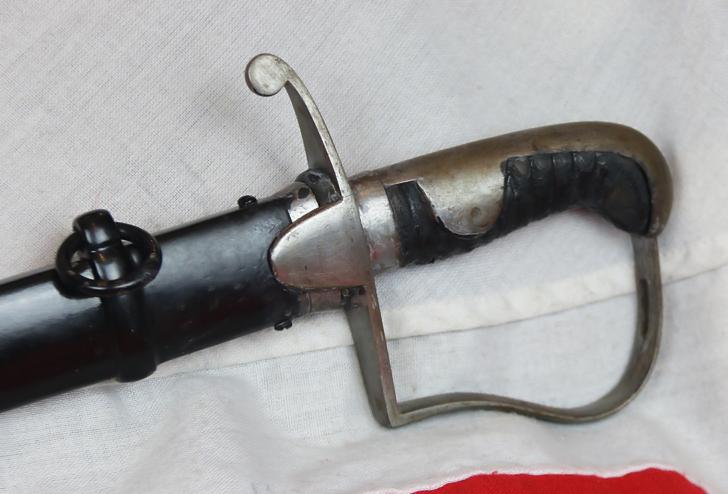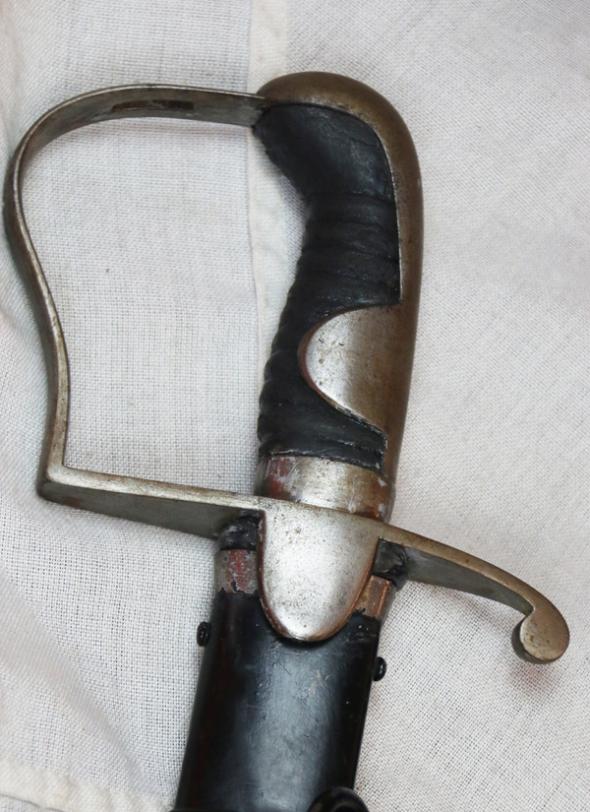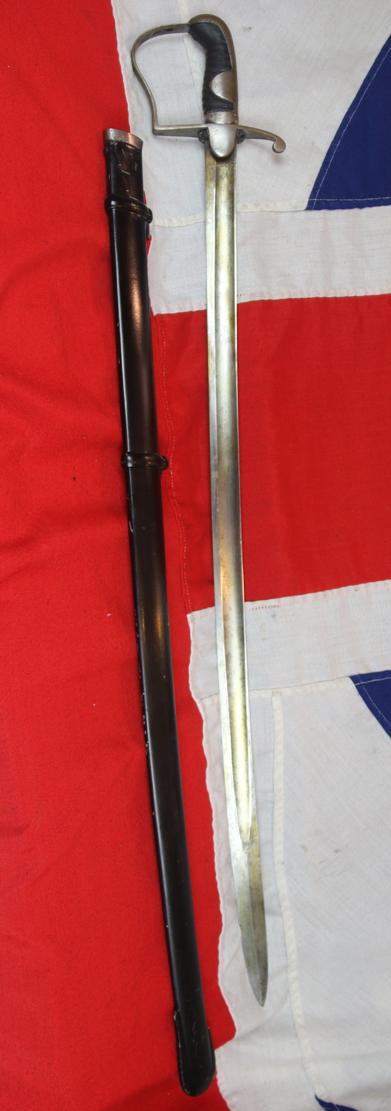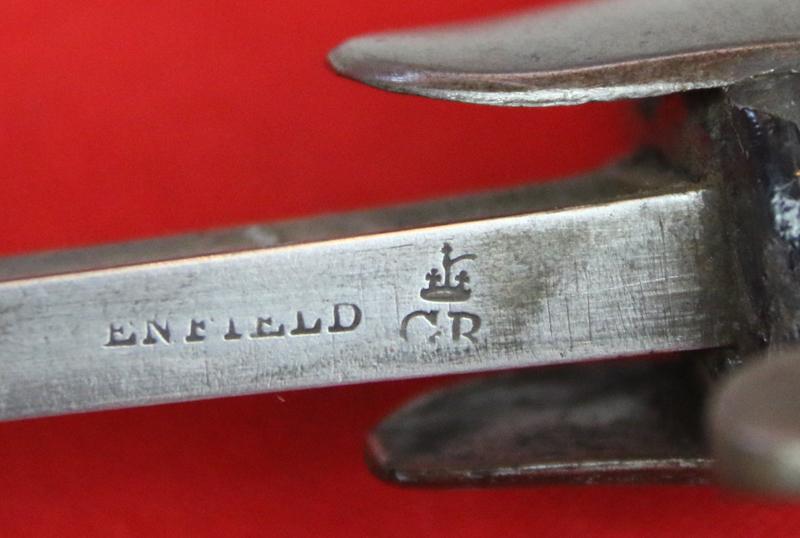A Most Interesting Georgian Period Royal Small Arms Enfield 1796 Pattern Cavalry Troopers Sabre
From first glance, externally, this has more of the appearance of the 1811 pattern Blucher sword, used by the Prussian cavalry for many years. However, in fact it is either a prototype, made by the Royal Small Arms Factory when Enfield commenced blade manufacturing or, made in such few numbers that very few remain. It has the typical regulation 1796 pattern P hilt, with leather grip, standard steel combat scabbard with two ring mounts, with later pattern shoe. The blade, somewhat shallower than the regular 1796, and more akin to the 1821 pattern, is in very good condition, and without any traces of pitting. The blade spine is stamped Enfield and further bears an official ordnance crowned GR inspection stamp. The scabbard has been re-painted black sometime in the past. Another late 1796 pattern sabre, with a pipe back blade, from the same King George IVth period, appears in Richard Dellar's book, British Cavalry Sword 1788-1912 page 56, plate 5.17. The Royal Small Arms Factory had its origins in a short-lived Royal Manufactory of Small Arms established in Lewisham in 1807. (The site in Lewisham was a mill where armour had been made since the fourteenth century; following its purchase by Henry VIII in 1530, it became known as the Royal Armoury Mills and served his armoury in Greenwich.) During the Napoleonic War, the increasing demand for large quantities of reliable weapons prompted the Board of Ordnance to look into building a new factory on a larger site.
The factory was to be located at Enfield Lock on a marshy island bordered by the River Lea and the Lee Navigation. The land was acquired in 1812 and the factory completed by 1816. The site had the advantages of water-power to drive the machinery and the River Lea Navigation for the transportation by barge of raw materials and finished weapons to the River Thames, 15 miles away to be loaded onto sailing ships. Neighbouring farmland was acquired to become a restricted area to test ordnance from the Royal Gunpowder Mill. The RSAF was originally all situated on the east side of the Lea, in the county of Essex in Waltham Abbey parish, Sewardstone hamlet. The course of the river was diverted during the life of the factory, and part of the site then fell in Enfield parish.
The original ambitious plans by Captain John By included three mills. Later, the engineer John Rennie recommended the construction of a navigable leat. The leat was made, although only one mill with two waterwheels was completed.
In 1816 the barrel branch was transferred from Lewisham; and by 1818 the lock and finishing branches had been moved to the site, enabling the closure of the Lewisham factory. The sword-making department was set up in 1823. We do believe this is the first surviving example of its kind we have seen in at least 40 years, although that is not to say it is a valuable rarity, but it is intriguing, bearing in mind that during that period of time we have handled many tens of thousands of swords, both ancient, antique and modern.
For reference on Enfield manufactured British other ranks sword blades from the Georgian era, prior to 1830; Quoted from the Royal Armouries Collection;
"Curved, single-edged blade, flat-backed blade with a narrow fuller near the spine, extending for approx. two thirds of its length; short, unfullered ricasso. Type Specimen: IX.7483. Most of this type have blades marked Enfield and have crowned GR inspectors' stamps, the latter indicating a date of 1830 or earlier."
Code: 23631
795.00 GBP









